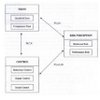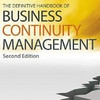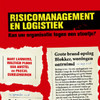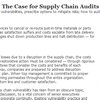 Some time ago, Jeff Karrenbauer, CEO of Insight Inc., a top international provider of supply chain planning solutions for the world’s foremost companies, wrote an article on How to Audit, Analyze, and Mitigate Supply Chain Vulnerability. The article makes a strong case for every CEO of any company to demand a comprehensive supply chain risk audit and a corresponding set of mitigation strategies immediately and wait until after disaster strikes only to realize that “we should (or could) have known better”. To make the supply chain more resilient, businesses need to do more than just think about the problem; they must prepare to act effectively.
Some time ago, Jeff Karrenbauer, CEO of Insight Inc., a top international provider of supply chain planning solutions for the world’s foremost companies, wrote an article on How to Audit, Analyze, and Mitigate Supply Chain Vulnerability. The article makes a strong case for every CEO of any company to demand a comprehensive supply chain risk audit and a corresponding set of mitigation strategies immediately and wait until after disaster strikes only to realize that “we should (or could) have known better”. To make the supply chain more resilient, businesses need to do more than just think about the problem; they must prepare to act effectively.
Why is this so important?
As Jeff writes,
Corporations need to be aware of what happens when something unexpected occurs within the supply chain. Not only is there the loss of cost of goods, but also indirect costs such as the time delays and labor involved in reordering, re-receiving, restocking, remanifesting, and reshipping those goods.
Manufacturers pay higher prices to cancel or re-route just-in-time materials or parts for manufacturing. Customer satisfaction suffers and costs escalate from late delivery penalties. Inventory shortages shut down production lines and halt distribution – for you or your customers.
When companies estimate losses due to a disruption in the supply chain, the costs and benefits of alternative restorative action must be considered – through rigorous supply chain design alternatives that consider the costs and benefits of each alternative action.
Companies should perform a supply chain audit that identifies where supply chains may be vulnerable, the strengths and weaknesses of the supply chain, where response programs are weak, where safeguards or alternative sources are missing. A supply chain vulnerability audit is
a three-step holistic process that encompasses the entire supply chain.
So, the three steps to a more resilient supply chain are:
- Education
- Audit
- Prescriptive Analysis
Education
– Acquire knowledge about best practice through case study examples.
Audit
– Can the business still operate after a disaster?
– What happens if a warehouse, distribution center, or manufacturing plant is lost?
– Are there alternative warehouses, plants, distribution centers, and where are they located?
– Is there too much dependency on a primary supplier?
– Are there alternative sources of supply?
– Are there sufficient different alternatives for delivering products to customers or warehouses?
Prescriptive analysis
– What are the most cost-effective enhancements to make the supply chain more resilient?
Striking a balance
The underlying idea here is to reach the optimal tradeoff between disruption costs and mitigation costs. Too little mitigation, and it may not be worth anything. Too much, and you’re paying for something that may never happen, at least not to the extent that you plan to mitigate.
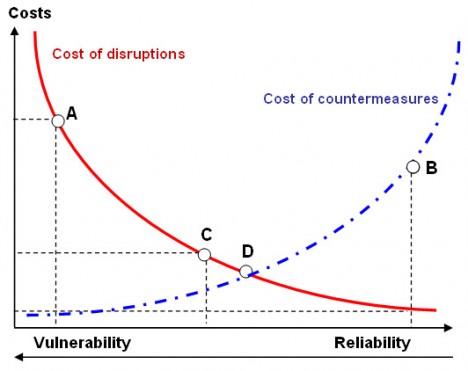
Consider a supply chain vulnerable to disruption, with no mitigation measures in place. The cost of disruption in this case can be illustrated by point A in the figure above. Putting some mitigation measures in place may lower the cost of disruption to point C. However, there is still room for improvement. On the other hand, it is also possible to “overdo” the mitigation measures at a cost equal to point B, where no disruption costs occur. The optimum then is reached at point D, where disruption costs balance the mitigation costs.
Yes, to make the supply chain less vulnerable, businesses need to do more than just think about the problem; they must be prepared and ready to act. Implementing the steps above is definitely one way to achieve that goal.
Link
Author link
- linkedin.com: Jeff Karrenbauer


